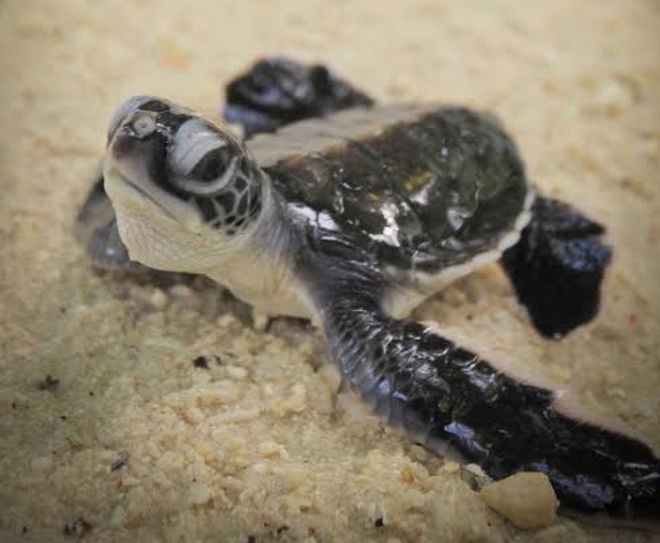Five Reasons To Turn Off Your Lights For Earth Hour This Weekend
Spoiler: all of these reasons are turtles.

Earth Hour — the global lights-off event that started in Australia back in 2007 — is being held this Saturday March 29 at 8.30pm. And this year we’re doing it for the turtles.
Well, more specifically: this year Earth Hour is focused on helping save the Great Barrier Reef from the impacts of climate change. A lot of turtles rely on the Reef, and they’re one of the most vulnerable animals to a warming world. Which gives us an excellent excuse to look at photos of the internet’s best turtles.
If you want to help save them, hold an Earth Hour gathering this Saturday with friends and family, and sign the Earth Hour pledge embedded below.
–
1. Sea Turtles Need Nesting Beaches, Please
See this green turtle hatchling? It is on a beach. Turtles return to breed in the region where they were born, but sea level rise affects turtle nesting beaches.
Projected sea level rise and increased storm activity may cause eggs to die, and loss or change to nesting beaches. With reduced space on a nesting beach, turtles are competing with one other to come ashore, climbing over each other to find a suitable nesting place, digging up one another’s nests, and exposing eggs to the natural elements — increasing the likelihood of predation and death.
So what happens if the turtles return to the beaches where they were born, and sea level rise means there’s not enough sand left to lay eggs in?
Sadness. Sadness is what happens.
–
2. Natalie Tran Loves Turtles
YouTube superstar Natalie Tran — aka communitychannel — loves turtles. That’s why she’s sitting with a bunch of them:
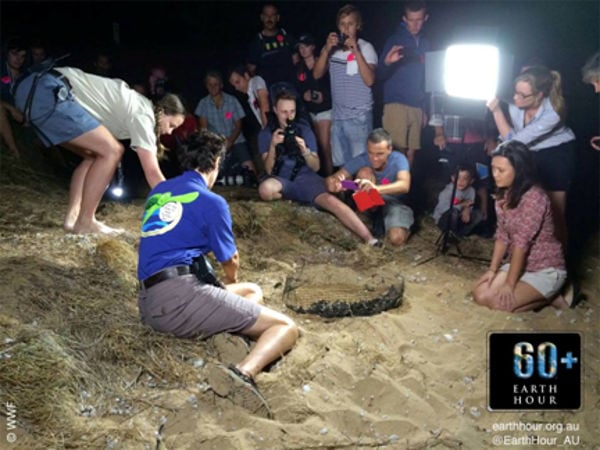
And here she is holding two tiny hatchlings:
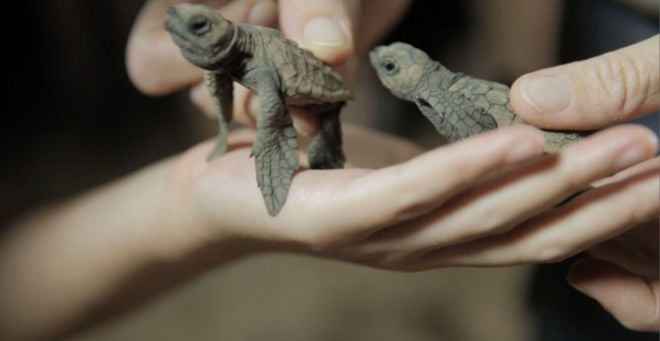
These photos were taken during the shooting of Earth Hour’s documentary about the Great Barrier Reef, which is airing on Network 10 at 4.30pm on Saturday. If you want to host a screening, you can download the doco from Thursday March 27, or watch it on YouTube via the Earth Hour website from 5pm on Saturday.
–
3. Baby Turtles Forever
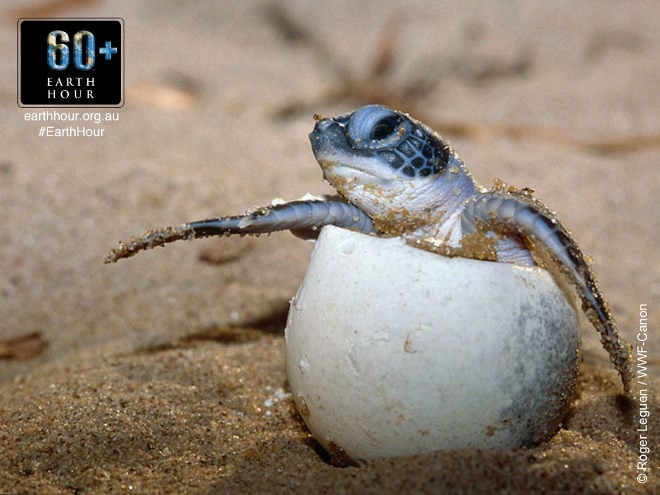
Turtle life cycles are very dependent on temperature. Successful incubation of sea turtle eggs on the beach occurs within a narrow thermal range of 25 °C to 33 °C, and the temperature of the sand determines the sex of the turtle. Hotter sands lead to more female turtles, and cooler sands result in more male turtles. If climate change continues at the current pace, nesting grounds on the Great Barrier Reef will soon be too hot.
Shifting nesting grounds south is becoming increasingly more difficult due to large-scale development around the Sunshine Coast. The gender imbalance could lead to a marked reduction in the turtle population size, the inability of turtles to find mates (so sad!) and, alarmingly, it may even result in a single sex cohort. That’s science-speak for “some species of female turtles won’t be able to find any male turtles to be friendly with, and therefore they will go extinct”.
–
4. Mutant Turtles. Not Even Kidding.
Hotter sand temperature don’t just lead to more female turtles; they also decreases the incubation period of sea turtle eggs, and decrease hatchling body size, which can reduce the baby turtle’s chances of survival.
When sand temperatures near the upper threshold of around 33 °C, there’s an increased risk of deformities and death. If the hatchlings do survive these high temperatures, their ability to move around could be reduced and they could more susceptible to predation.
Also, maybe, this.
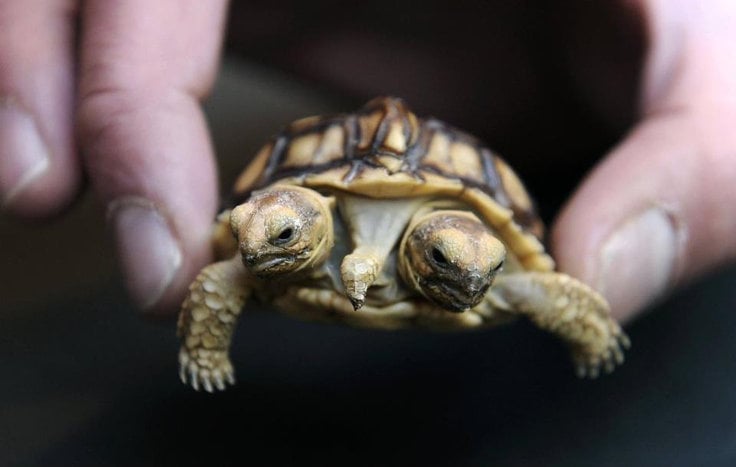
–
5. Because Turtles Have It Tough Enough As It Is
Only one in a thousand hatchlings will make it to adulthood. There are already enough problems in a baby turtle’s life — it’s hard enough just making it into the ocean. They really don’t need climate change to deal with as well.
–
–
Anna Rose is National Manager of Earth Hour at WWF-Australia, former Young Environmentalist of the Year, and author of the book Madlands: A Journey to Change the Mind of a Climate Sceptic. Follow her on Twitter @annarose
